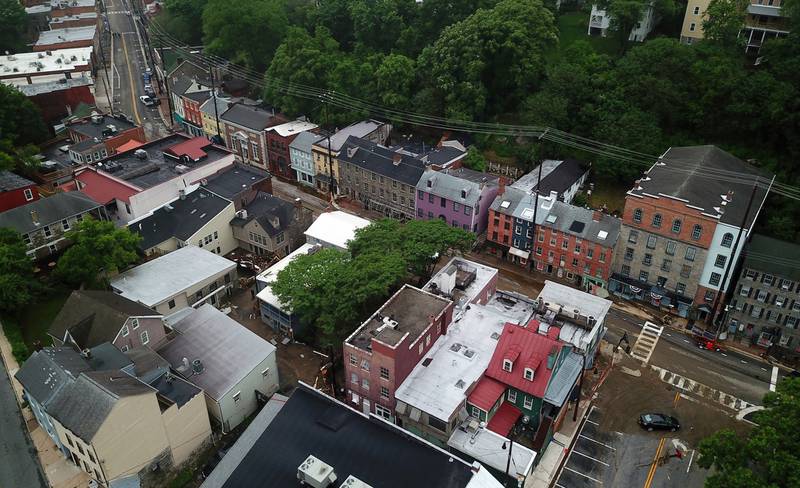Hometown Perspective: Historic Maryland Town Swamped by Floods
Main Street in Ellicott City, Maryland after devastating floods in 2018.
March 23, 2022
ELLICOT CITY, Md. — The town of Ellicott City, known to Marylanders such as myself as “Old Ellicott City,” was devastated for the second time in two years in 2018 as over seven inches of rain fell over the community, destroying shops and homes and killing two people.
Historic Ellicott City is home to many family owned, small businesses and restaurants. Main Street is a popular destination for families to eat, shop or just walk around the town and take part in the many activities and events the city offers. It is a community loved by all of Maryland and home to important landmarks, such as the oldest train station still standing in America.
Marylanders were heartbroken to hear about the destruction in 2016 and then again in 2018. Because of my love for Ellicott City, I wondered: Are these floods the result of climate change? Or is the city almost set up for disaster considering its location?
At first it seemed like the answer was No. 2. Main Street in Ellicott City runs downhill and parallel to the Patapsco River, a large river that has many smaller rivers feeding into it and that flows into the Chesapeake Bay.
When the first flood hit in 2016, it was because over six and a half inches of rain fell over Ellicott City in less than two hours. According to a timeline published by the Patapsco Heritage Greenway, The Tiber River and Hudson River began to overflow their channels and flood the parking lots next to Main Street, taking multiple cars with them.
Then the Patapsco River rose over six inches in an hour; within two hours since the rainfall had started, the river rose over thirteen feet. Stores at the bottom of Ellicott City got up to eight feet of water. The flood ended up killing two people, Jessica Watsula and Joseph Anthony Blevins, and eleven buildings were evaluated as total losses.
But experts also said that the probability of a storm like that occurring was 0.1% chance; they deemed it a one-thousand-year flood.
Then a second storm with nearly nine inches of rainfall in the Ellicott City area and similar damages happened less than two years later.
Residents of Maryland have started blaming the new developments at the top of Ellicott City for the recent excessive flooding. Because urbanization creates many impermeable surfaces like roads and roofs and parking lots, rainwater runs off these surfaces instead of penetrating the ground, making floods more likely and worse when they happen. Historic Ellicott City is already at an elevated risk for flooding because of its location. This location, combined with the amount of development surrounding the town and the river, has created the situation Ellicott City now faces.
But actions are being taken to prepare for the devastating floods that are sure to be coming as climate change makes storms more frequent and severe. Howard County has adopted an “Ellicott City Safe and Sound Plan.” Some of the measures, like demolishing three buildings for flood mitigation, and possibly one more if the city can purchase it, are worrying to residents, who fear that destroying historic buildings will take away from the culture of the town and harm its appeal.
Other actions in the Howard County Water Master Plan draft include putting permeable pavers in parking lots and installing debris snaps to prevent debris from obstructing stormwater drains.
Some shop owners in Ellicott City believe that the issue is global and needs to be addressed on an international level as well. However, some people believe that the issue is not related to global warming and due solely to luck.
They are wrong. A study by the National Oceanic and Atmospheric Administration in 2016 concluded that excessive rainfall was “40 percent more likely and ten percent more intense because of climate change.”
Translation: Global warming does not directly cause floods; however, it does affect the factors that contribute to flooding such as location, urbanization and human impact. These factors include the way communities manage waterways and the changes people make to the land around an area.
Weather is the factor impacted the most by climate change because as the atmospheric temperature increases the water the atmosphere retains also increases. This increase in water retention subsequently increases the amount of water that’s released during rainfall.
Both floods in Ellicott City had devastating physical and emotional effects on the community, whose members spent months cleaning up and rebuilding. People’s different beliefs on whether or not climate change contributed doesn’t change the fact that climate change does play a role in the intensity of floods.






